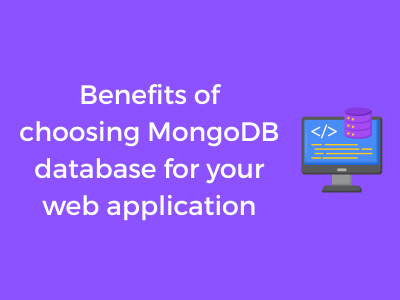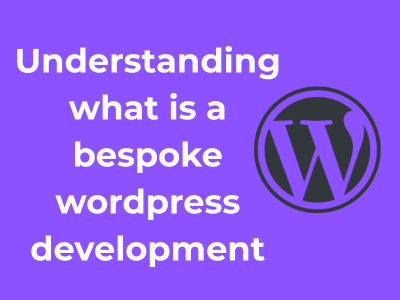When you’re building a web application, flexibility is key. Think about it: your app will grow, evolve, and probably go through several iterations as you adapt to user needs. This is where MongoDB shines with its document-oriented database structure. It’s not only modern but also incredibly versatile, fitting naturally into the dynamic needs of today’s web development landscape.
What Makes Document-Oriented Databases So Special?
Traditional relational databases rely on rows and columns in a rigid table structure. While that works in some cases, it often forces developers to make compromises in their design. Enter MongoDB, with its JSON-like documents. Instead of being tied to predefined schemas, MongoDB lets you store data in a more natural and flexible format that’s easy to read and scale.
This means instead of splitting information across multiple tables (think of the disjointed pieces of a puzzle), everything related to a specific “document” (for example, a user profile) can be stored in one cohesive unit.
Why Developers Love This Structure
Here’s why you’re likely to fall in love with MongoDB’s document-based nature:
- No More Schema-Hassle: You don’t need to spend endless hours designing complex schemas upfront because documents can vary in structure. This is ideal for teams working in agile development environments.
- Effortless Updates: Adding new fields or changing data layouts becomes surprisingly simple. Forget breaking your database structure when you want to tweak a feature on-the-fly!
- Human-Readable Yet Powerful: The JSON-like data format isn’t just great for machines—it’s also intuitively understandable for developers, making collaboration smoother across team members.
Practical Use Cases of MongoDB’s Flexibility
This flexibility can have a transformative effect on how you approach your web application. Let’s say you’re developing an e-commerce application. Each product might have vastly different details: books need author names and publishers, while electronics require technical specifications. Rather than forcing all items into the same rigid structure, MongoDB allows you to store each product type as its own document, tailored to its unique fields. Neat, right?
Another scenario could be a social media app, where user posts come in different formats—text, images, videos, etc. MongoDB’s document structure can support all this variance effortlessly, keeping development smooth and focused.

Why Schema-Less Architecture Makes a Difference in Web Development
Imagine a world where your database doesn’t demand rigidity but instead adapts to the unique shape and flow of your application. That’s the magic of a schema-less architecture, one of MongoDB’s standout features. Whether you’re a seasoned developer or just kicking off your web development journey, this flexibility can be a game-changer.
What Does Schema-Less Actually Mean?
In traditional relational databases, you need to define a strict schema upfront. Every table has rows and columns, and each column must follow predefined data types and structures. If you want to make changes—like modifying a column or adding new fields—it can be a cumbersome process, slowing down your project timelines.
MongoDB takes this headache away by embracing a schema-less structure. In simple terms, it allows you to store data in JSON-like documents, where each document can have a unique structure and data fields. There’s no “one-size-fits-all” constraint. Instead, you can let your data evolve organically as your application grows. Amazing, right?
Why Developers Love the Schema-Less Approach
- Greater Agility: No need to spend weeks locking down your data model before building out your application. You can adapt as you go, making it perfect for projects with evolving needs.
- Faster Prototyping: Since MongoDB doesn’t enforce strict schemas, you can experiment and iterate faster, bringing your ideas to life in record time.
- Reduced Downtime: Want to add new data fields? No problem! With MongoDB, you can make real-time adjustments without causing disruptions to your application.
Perfect for Diverse Data Loads
Modern web applications often deal with varying data types—from user profiles to transaction logs, multimedia content, and more. The schema-less nature of MongoDB allows you to store these different types under one roof without worrying about redundancy or incompatibility. For example:
- You can have a document that stores user names and preferences in one format.
- Meanwhile, another document in the same collection can store complex nesting data, like session details or site interactions.
This adaptability makes MongoDB an excellent choice for projects where data is complex or unstructured, such as e-commerce platforms, content management systems, or IoT applications.
Continue to Maintain Best Practices
While MongoDB’s schema-less structure gives you freedom, some structure is still a good thing! As an expert tip, define general data guidelines and validations to ensure consistency in your application. MongoDB’s optional schema validation tools can help by enforcing rules on specific fields—so you get flexibility and order.
Why It Works for the Long Haul
If you’re planning a long-term project, scalability is likely at the forefront of your mind. A schema-less architecture ensures that your database remains flexible as your application scales. New features, updates, and data types can be incorporated with little friction. It’s like giving your app a lifelong adaptability toolkit!
High-Speed Performance for Modern Applications
If you’re building a web application that will handle a large number of users, perform complex queries, or process real-time data, then speed is everything. Let’s talk about one of MongoDB’s shining stars – its lightning-fast performance. In the world of modern web apps, MongoDB’s ability to handle data efficiently can make all the difference.
Why Speed Matters
Imagine you’re running an e-commerce site or a real-time messaging platform. Users expect instant responses when they search for products or send messages. Delays of even a fraction of a second can lead to frustration and, ultimately, losing users. MongoDB’s architecture is designed to keep such problems to a minimum. With its document-oriented structure, MongoDB ensures that data retrieval and processing occur swiftly.
The Secret Behind MongoDB’s High-Speed Performance
What makes MongoDB so fast, you ask? Here are a few reasons:
- No Joins Required: Unlike traditional relational databases, MongoDB doesn’t rely on joins. Data often comes in pre-grouped “documents,” so retrieving complex information becomes faster and simpler.
- Indexing Power: MongoDB allows you to create indexes on your data for quicker searches. From basic text indexes to geospatial indexes, it helps you speed up common queries and even the heavy ones utilizing custom field indexing.
- Native NoSQL Approach: Its NoSQL nature means MongoDB isn’t bound by the rigid tables of SQL databases. It reads and writes data as BSON (Binary JSON), enabling faster processing compared to a standard SQL query.
Real-Time Data? No Problem!
For apps that rely on real-time responses, like live sports apps or gaming leaderboards, MongoDB is a match made in heaven. Its in-memory storage engine allows data to remain in active memory, significantly boosting read/write speeds. This means updates, changes, and retrievals happen almost instantly – just what you need for those fast-paced environments.
Shining the Spotlight on Use Cases
So, what kinds of applications benefit from MongoDB’s speedy nature? Here are a few examples:
- Streaming Services: Whether it’s music, movies, or live media, MongoDB handles dynamic data efficiently so audiences experience seamless playback.
- Travel Apps: Airline systems and map-heavy apps need to pull data rapidly to provide smooth interactions for users booking tickets or navigating routes.
- E-commerce Websites: Rapid product searches and transaction processes are critical for keeping shoppers engaged and happy.
Scaling Big Projects with MongoDB’s Horizontal Scalability
Let’s talk about the nitty-gritty of scaling big projects—ever felt the headache of handling an avalanche of data while your app grows? You’re not alone. Thankfully, MongoDB has a remarkable solution for this called horizontal scalability. This feature makes MongoDB a powerhouse for developers looking to scale up without pulling their hair out.
What is Horizontal Scalability?
In simple terms, horizontal scalability means adding more nodes (servers), rather than upgrading an existing machine, to handle an increasing workload. Imagine your app as a box. Instead of getting a bigger box that could burst at the seams, you add more identical boxes, distributing the content evenly. With MongoDB, it’s as easy as building that box and stacking more alongside it.
Why Does This Matter for Your Project?
If your app is a small blog or a portfolio site, any database can do the job. But when you’re running something like an ecommerce platform, social network, or a multimedia-rich app, scaling becomes a real concern. Things like skyrocketing user traffic, thousands of concurrent transactions, or massive data uploads can rock the boat if your database isn’t scalable enough.
This is where MongoDB steps in like a true hero. Its horizontal scalability, powered by sharding, ensures your app can manage exponential growth.
The Magic of Sharding
Wondering what sharding is? It’s not as intimidating as it sounds. Think of sharding as breaking your data into smaller chunks and distributing these pieces across a cluster of servers. MongoDB handles this automatically, acting as a project manager who assigns different tasks to different team members for faster, more efficient output.
The cool part? You get to decide how the data is distributed. Have user profiles? You can shard by user IDs. Dealing with regions or zones? Shard by geographical location. The flexibility here ensures that MongoDB meets the unique scaling needs of your app.
The Benefits of Going Horizontal with MongoDB
- Cost Efficiency: Buying additional smaller servers is often more cost-effective than upgrading a massive one.
- Seamless Growth: MongoDB makes adding new data-bearing nodes to your cluster simple and straightforward!
- High Availability: With data replicated across nodes, you minimize downtime—critical for apps running 24/7.
- Load Distribution: Queries are split across multiple servers, ensuring your performance remains smooth as butter even under a heavy load.
When Should You Think About Scaling?
Scaling is not something you should hold off until the last moment. The earlier you plan for your app’s growth, the easier the transition will be. MongoDB lets you start small and grow big, making it a fantastic choice for startups, mid-sized businesses, and even massive enterprises.
So, whether you’re developing a music streaming app or launching the next big gaming sensation, MongoDB offers you the flexibility to scale without breaking a sweat. Couple this with its superb horizontal scaling mechanism, and you’re set up for success!
Easier Integration with Popular Programming Languages and Frameworks
When diving into web application development, we often juggle multiple programming languages and frameworks. The good news? MongoDB simplifies the process of integrating with these tools, making it a powerful choice for developers. Let’s talk about how this works and why it makes your life so much easier!
Support for All the Favorites
MongoDB is famously flexible and plays nicely with nearly all of the major programming languages out there. Whether you’re coding in JavaScript, Python, Java, Ruby, PHP, Node.js, or C#, MongoDB has your back. It offers official drivers that make connecting your application straightforward and reliable. This means you don’t need to wrestle with third-party drivers or worry about compatibility issues.
Seamless Framework Integration
Frameworks are the backbone of many modern web applications, and MongoDB knows how to integrate with the big players. Whether you’re leveraging Express.js in a Node.js stack (hello, MEAN or MERN development!) or working with Django for your Python projects, MongoDB fits right in. The database’s adaptability means you can focus on building features instead of wasting time tweaking backend connections.
Let’s Talk JSON: MongoDB Speaks the Language of the Web
If you’ve ever worked with data in web development, you know that JSON (JavaScript Object Notation) is the universal language of the internet. Here’s where MongoDB really shines: it’s built on a flexible, JSON-like document structure called BSON. This makes it incredibly simple to send data between your front-end and back-end, as there’s less need for complex transformations or additional formatting. In short, MongoDB helps you get from “idea” to “implementation” at lightning speed!
A Growing Ecosystem of Tools
MongoDB doesn’t stop at supporting languages and frameworks—it also boasts an ecosystem of tools to make your development journey smoother. Here are some standout examples:
- Mongoose: If you’re a Node.js developer, Mongoose offers a streamlined way to interact with MongoDB, including features for validation, middleware, and query building.
- Pymongo: For Python enthusiasts, Pymongo brings a robust set of tools to work efficiently with MongoDB databases.
- MongoDB Atlas: The cloud-hosted version of MongoDB makes deployment, scaling, and monitoring an absolute breeze.
Why This Matters for You
So, why should you care about MongoDB’s compatibility with languages and frameworks? Here are the key benefits:
- Reduced Learning Curve: If you’re already familiar with a programming language, you don’t need to reinvent the wheel to work with MongoDB. Just connect and go.
- Faster Development Cycles: The seamless integration means less time fiddling with configurations and more time building features that users love.
- Adaptability: Projects often evolve, and MongoDB’s flexibility ensures it can grow with whatever languages or frameworks you pivot to.
Robust Security Features to Protect Your Application Data
Let’s talk about security—it’s like the lock on your front door but for your data. When you’re building an application, whether it’s a small blog or a massive e-commerce platform, you need to keep it safe from hackers, malicious attempts, and data breaches. That’s where MongoDB really shines by offering top-notch security features.
1. Advanced Encryption Techniques
MongoDB ensures data security through robust encryption both at rest and in transit. With options like field-level encryption, you can encrypt sensitive data at the field level within your documents. Even better? Since the data is encrypted before it reaches the database, control over the decryption keys remains completely yours. Plus, this feature helps businesses comply with strict privacy regulations like GDPR and HIPAA.
2. Role-Based Access Control (RBAC)
Have you ever handed your house keys to someone, but only trusted them enough to access certain rooms? That’s kind of what MongoDB does with its Role-Based Access Control (RBAC). You can define roles and permissions, ensuring users only have access to the data they truly need. This limit minimizes any potential risk from accidental or malicious data mishandling. The fewer people with full access, the better, right?
3. Authentication Integrations
MongDB seamlessly integrates with trusted authentication protocols like LDAP, Kerberos, and OpenID Connect. What does this mean for you as a developer or business owner? It means you can work with a trusted system that verifies a user’s identity before letting them in. Imagine each user going through an ID check at the door—this is an extra layer of protection to ensure your application is in safe hands.
4. Built-in Audit Logging
If something suspicious happens, you want to be able to trace it back, right? MongoDB comes equipped with audit logging, which tracks database actions and modifications, making it easier to detect any unwanted behaviors or access attempts. Essentially, it’s your very own security camera, monitoring who accessed what, and when.
5. Geared Toward Compliance
Whether your application serves healthcare customers or processes payments, industry-specific regulations often have strict requirements surrounding how data is stored and accessed. MongoDB makes life easier by providing features to ensure compliance with standards like GDPR, CCPA, and PCI DSS, reducing potential headaches with regulatory bodies.
6. Automatic Data Redaction
Say goodbye to unnecessary exposure of sensitive data! With data redaction features, MongoDB can automatically limit what parts of the data are visible to whom. By controlling this exposure dynamically, you reduce the risk of sensitive information landing in unintended hands.
Why This Matters for Your Application
In today’s digital world, cyberattacks and data breaches are more prevalent than ever. MongoDB’s robust security features give you peace of mind while protecting your application’s integrity. Whether you’re a startup or an enterprise, it’s always better to invest in a secure database solution from the get-go rather than scramble later to recover lost or stolen data.
Streamlined Data Management with Built-in Tools and Features
Managing data can be a daunting task in web development, don’t you think? Without the right tools and features, you might end up feeling like you’re trying to organize a thousand-piece puzzle without a picture to guide you. Luckily, MongoDB has your back! With its efficient, built-in data management tools and features, you’ll find yourself breezing through tasks that once took hours. Let’s dive into why this makes life so much easier for developers.

1. Easy Aggregations with the Aggregation Pipeline
Have you ever struggled with crunching data or generating reports? The aggregation pipeline in MongoDB makes it super simple to filter, process, and transform your data within the database itself. Think of it as a buffet of operations like sorting, grouping, and projecting data that you can chain together to create powerful results without writing extensive backend code!
- Efficient Queries: Combine multiple operations into one streamlined query.
- Transform Data Hassle-Free: Create new computed fields or manipulate document data with ease.
This feature saves you time, reduces code complexity, and keeps your web app performance snappy.
2. Built-in Indexing for Faster Data Retrieval
Indexing is the unsung hero of any database, and MongoDB excels at it. With built-in indexing options, you can customize how your data is retrieved and optimized for specific queries.
For instance, if you’re running a blog and frequently searching articles by keywords or tags, a properly configured index will make these searches lightning-fast. And for those of you working on e-commerce platforms, querying product catalogs with thousands (or millions!) of items feels effortless thanks to MongoDB’s indexing capabilities.
3. Atlas: Fully-Managed Database Service
For those of you who want to focus on coding and building features (and who doesn’t?), MongoDB Atlas—a fully-managed database-as-a-service—takes over the heavy lifting of database management. It handles tasks like backups, maintenance, monitoring, and scaling without requiring constant attention from your end. It’s like having a personal assistant for your database!
- No more manual backups: Atlas ensures your data is safe and secure automatically.
- Real-time monitoring: Keep an eye on database performance using ready-made dashboards.
And the best part? Atlas integrates seamlessly with cloud platforms like AWS, Google Cloud, and Azure, giving you tons of flexibility.
4. Visual Data Exploration with MongoDB Compass
Let’s talk visual tools—because who doesn’t love a graphical interface for exploring their data? MongoDB Compass is a visual tool that allows you to easily browse your documents, optimize query performance, and analyze schema patterns. It’s like having a magnifying glass for your database without needing to write a single line of code.
Whether you’re a database newbie or a seasoned pro, Compass simplifies and streamlines managing your MongoDB clusters.











